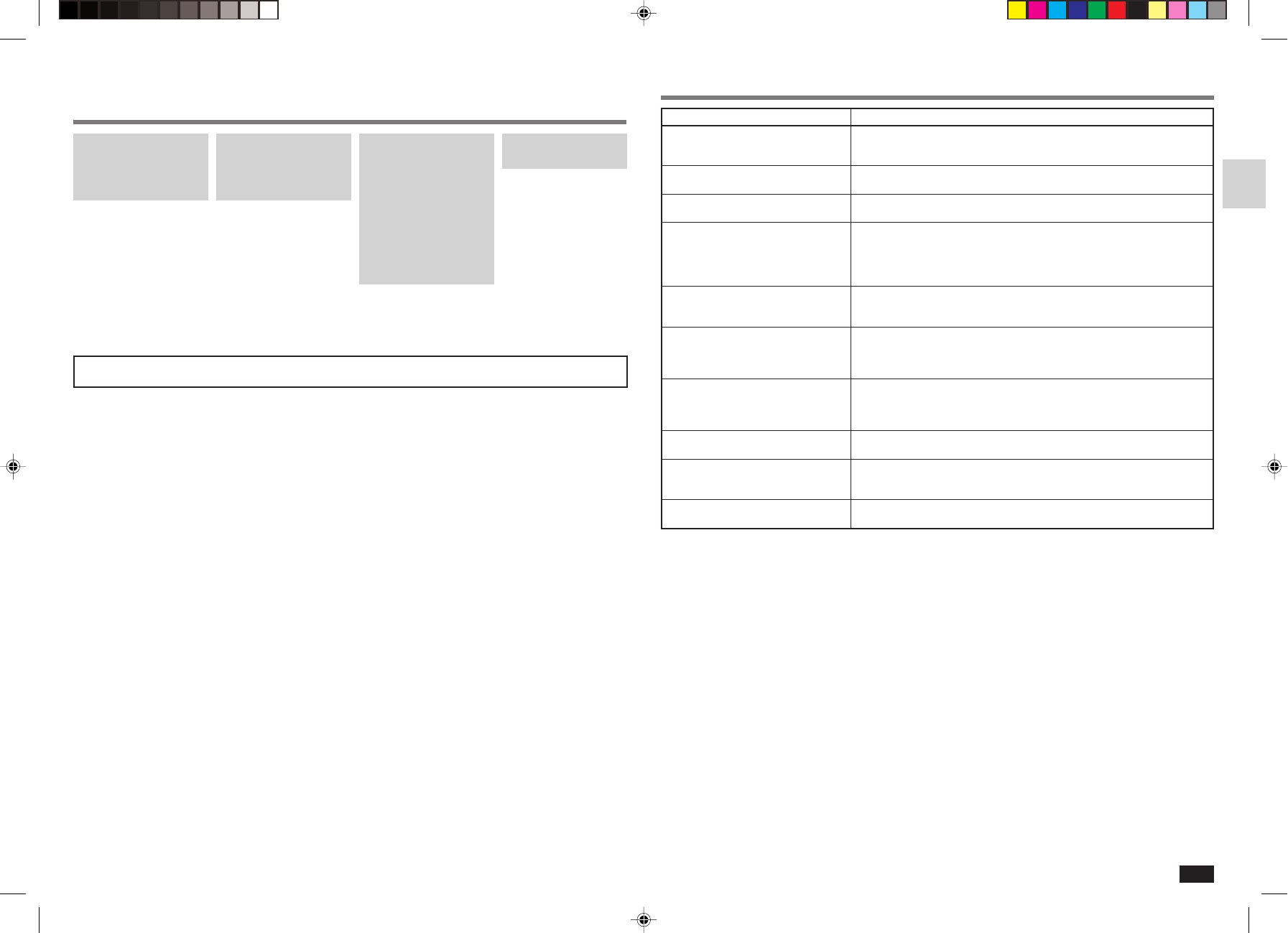
11
Display of the remote
controller does not
appear(1, 2).
The remote control
signal cannot be
received if the remote
controller is not
operated near the air
conditioner (1).
dd
dd
d
Check the following.
1 Aren’t the batteries ex-
hausted?
2 Is the polarity (+, -) of
the batteries correct?
The air conditioner
cannot be operated.
dd
dd
d
Check the following.
1 Is the breaker turned
on?
2 Isn’t the fuse blown?
3 Isn’t the ON-timer set?
When a power failure
occurs.
To restart the unit, press
the ON/OFF button on the
remote controller again af-
ter the restoration of the
power.
Cannot be cooled
sufficiently.
dd
dd
d
Check the following.
1 Is the temperature set-
ting correct?
2 Isn’t the filter dirty?
3 Isn’t the outlet of the out-
door unit blocked?
Even if the above items are checked, when the air conditioner does not recover from the trouble,
stop using the air conditioner and consult your dealer.
In the following cases, stop operation and consult your dealer.
• The remote control signal may not be received in a room where an electronic ON/OFF type fluorescent lamp (inverter
type fluorescent lamp, etc.) is used.
• In the region where the electric wave is weak, when the air conditioner is operated, noise may be generated in radio
reception.
• When thunder is heard, stop operation and turn off the breaker. Otherwise, the electrical parts may be damaged.
BEFORE CONTACTING THE SERVICE REPRESENTA-
TIVE, CHECK THE FOLLOWING AGAIN
WHEN YOU THINK THAT TROUBLE HAS OCCURRED
Answer (not a malfunction)
• This protects the air conditioner according to the instructions from the
microprocessor.
Please wait.
• This sound is generated by the expansion/contraction of the front panel, etc.
due to change in temperature.
• The air conditioner sucks in an odor adhering to the wall, carpet, furniture,
cloth, etc. and blows it out with air.
• In DRY operation, the unit operates using the same refrigerant circuit as in
COOL operation. DRY operation time has to be reduced in order to lower
humidity without much room temperature decreasing. So the compressor
sometimes stops, and at the same time the indoor fan stops. This prevents
water condensed on the heat exchanger from evaporating again.
• This is the sound of refrigerant flowing inside the air conditioner.
• This is the sound of condensed water flowing in the heat exchanger.
• This is the sound of the heat exchanger defrosting.
• This sound is heard when the outside air is absorbed from the drain hose in
turning on the range hood or the ventilation fan and that makes water flowing
in the drain hose spout out. This sound is also heard when the outside air
blows into the drain hose in case the outside wind is strong.
• When a ventilation fan or a gas cooker is used in a room, the cooling load
increases, resulting in an insufficient cooling effect.
• When the outside air temperature is high, the cooling effect may not be suf-
ficient.
• This is the switching sound in turning on/off the fan or the compressor.
• When the air conditioner is operated in the COOL or DRY mode, if the opera-
tion continues with air blowing down for 1 hour, the direction of the air flow is
automatically set to position 1 to prevent condensed water from dropping.
• During COOL and DRY operations, pipe or pipe connecting sections are
cooled and this causes water to condense.
Question
The air conditioner cannot be operated
for about 3 minutes when restarted.
Cracking sound is heard.
The room smells strange.
The fan stops during the DRY operation.
The sound of water flowing is heard.
The sound as burbling is heard.
The room cannot be cooled sufficiently.
Mechanical sound is heard from the in-
door unit.
The air flow direction is changed during
operation.
Water leaks from the outdoor unit.


















